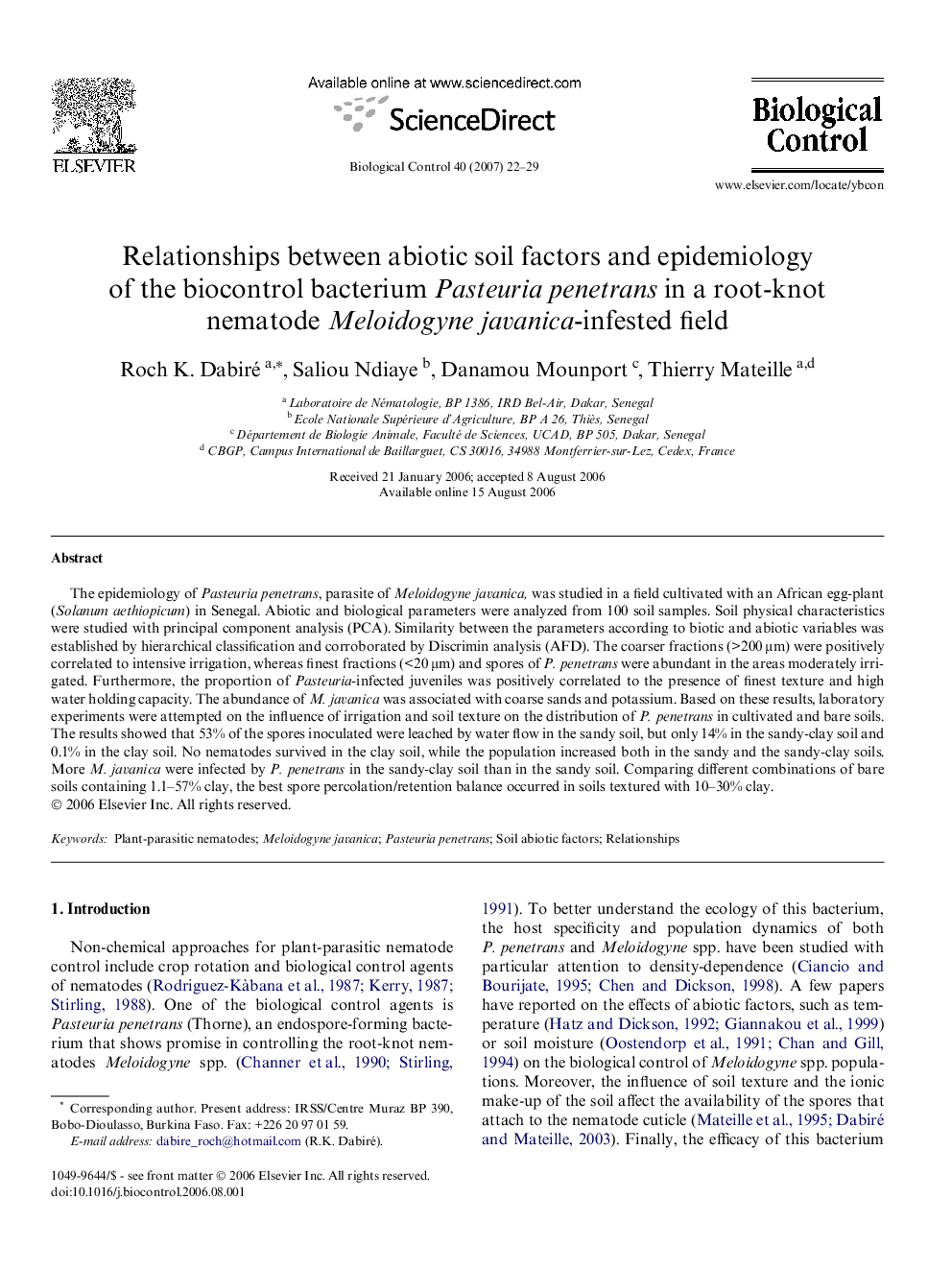| کد مقاله | کد نشریه | سال انتشار | مقاله انگلیسی | نسخه تمام متن |
|---|---|---|---|---|
| 4505298 | 1321137 | 2007 | 8 صفحه PDF | دانلود رایگان |

The epidemiology of Pasteuria penetrans, parasite of Meloidogyne javanica, was studied in a field cultivated with an African egg-plant (Solanum aethiopicum) in Senegal. Abiotic and biological parameters were analyzed from 100 soil samples. Soil physical characteristics were studied with principal component analysis (PCA). Similarity between the parameters according to biotic and abiotic variables was established by hierarchical classification and corroborated by Discrimin analysis (AFD). The coarser fractions (>200 μm) were positively correlated to intensive irrigation, whereas finest fractions (<20 μm) and spores of P. penetrans were abundant in the areas moderately irrigated. Furthermore, the proportion of Pasteuria-infected juveniles was positively correlated to the presence of finest texture and high water holding capacity. The abundance of M. javanica was associated with coarse sands and potassium. Based on these results, laboratory experiments were attempted on the influence of irrigation and soil texture on the distribution of P. penetrans in cultivated and bare soils. The results showed that 53% of the spores inoculated were leached by water flow in the sandy soil, but only 14% in the sandy-clay soil and 0.1% in the clay soil. No nematodes survived in the clay soil, while the population increased both in the sandy and the sandy-clay soils. More M. javanica were infected by P. penetrans in the sandy-clay soil than in the sandy soil. Comparing different combinations of bare soils containing 1.1–57% clay, the best spore percolation/retention balance occurred in soils textured with 10–30% clay.
Journal: Biological Control - Volume 40, Issue 1, January 2007, Pages 22–29